-
收藏模板下载模板
- 模板信息
- 更新时间:2023-09-08
- 字数:约11490字
- 页数:约9页
- 格式:.doc
- 推荐版本:Office2016及以上版本
- 售价:5 金币 / 会员免费
您可能喜欢的文档
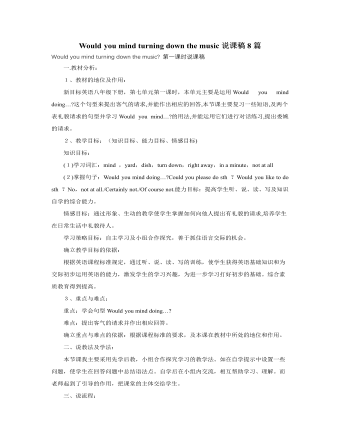
人教版新目标初中英语八年级下册Would you mind turning down the music说课稿8篇
一.教材分析: 1、教材的地位及作用:新目标英语八年级下册,第七单元第一课时,本单元主要是运用Would you mind doing…?这个句型来提出客气的请求,并能作出相应的回答,本节课主要复习一些短语,及两个表礼貌请求的句型并学习Would you mind…?的用法,并能运用它们进行对话练习,提出委婉的请求。2、教学目标:(知识目标、能力目标、情感目标)知识目标:(1)学习词汇:mind ,yard,dish,turn down,right away,in a minute,not at all(2)掌握句子:Would you mind doing…?Could you please do sth ?Would you like to do sth ?No,not at all./Certainly not./Of course not.能力目标:提高学生听、说、读、写及知识自学的综合能力。情感目标:通过形象、生动的教学使学生掌握如何向他人提出有礼貌的请求,培养学生在日常生活中礼貌待人。学习策略目标:自主学习及小组合作探究,善于抓住语言交际的机会。

人教版新目标初中英语八年级下册If you go to the party, you’ll have a great time教案2篇
区分宾语从句、定于从句和状语从句宾语从句和状语从句,都叫做主从复合句。宾语从句主要是中考必考的,是初中阶段必掌握的从句,宾语从句主要是掌握三要素,所谓宾语从句,就是宾语在主从复合句当中充当宾语的一个句子,叫做宾语从句。主句的谓语动词是及物动词,后面如果是词或者是短语的话,是简单句,如果是句子的话,肯定是宾语从句。I know that he good at English.就是宾语从句,三要素,一要素是要注意连词,连词一共学了三类连词,一类连词是that口语当中可以省略,就像刚才说的那一句,I hear he is good at English.还有疑问代词、疑问副词,how where when,疑问代词、疑问副词。还有一类连词weather是否的意思,不是状语从句当中的如果,这一定要和如果区分开,这是是否。I don't know if he interested at English。宾语从句要注意if是连词。第二要素是语序,要用陈述举语序。比如说你家有几口人,我们都说How many people are there in you family?但是这是简单句,一旦说成宾语从句,你可以告诉我你家有几口人吗?Could you tell me how many people there are in you family ?

人教版新目标初中英语八年级下册What were you doing when the UFO arrived教案2篇
(一).知识方面: 1.培养学生能运用过去进行时来描述、谈论过去某个时间正在发生的事情或动作的意识和能力,能就过去某个时间正在发生的动作做出正确的描述。 2.培养学生的想象力和角色扮演的合作能力。 3.培养学生讲述过去发生的事情经过的能力。能正确运用一般过去时来讲述故事。 (二).技能方面: 1.本单元的语言目标是Talk about past events and tell a story(谈论过去的时间和讲述一个故事),围绕这一目标,要涉及句型: What were you doing when the UFO arrived? ----I was sitting in the barber’s chair. The barber was cutting my hair. 因此必须学习standing、studying、cleaning、sleeping、cooking、making、eating、cutting、等表示地点的词,以便为上述句型提供语言材料。2.学习过去进行时的有关知识。Was/were+现在分词,是该时态的表达式。 3.在学习过程中,要区分The boy was walking down the street when the UFO landed.和While the boy was walking down the street, the UFO landed.这两种由when和while引导的状语从句的句型结构。注意它们的不同。
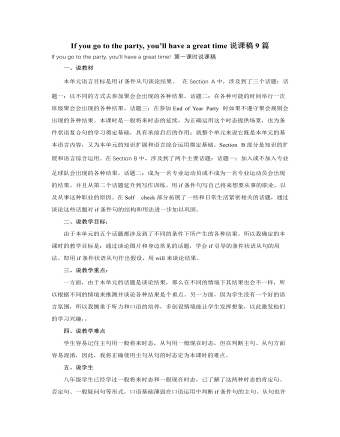
人教版新目标初中英语八年级下册If you go to the party, you’ll have a great time说课稿9篇
二、说教学目标:由于本单元的五个话题都涉及到了不同的条件下所产生的各种结果。所以我确定的本课时的教学目标是:通过谈论图片和身边常见的话题,学会if引导的条件状语从句的用法。即用if条件状语从句作出假设,用will来谈论结果。三、说教学重点:一方面,由于本单元的话题是谈论结果,那么在不同的情境下其结果也会不一样,所以根据不同的情境来推测并谈论各种结果是个重点。另一方面,因为学生没有一个好的语言氛围,所以我侧重于听力和口语的培养,多创设情境能让学生发挥想象,以此激发他们的学习兴趣,。四、说教学难点学生容易记住主句用一般将来时态,从句用一般现在时态,但在判断主句、从句方面容易混淆,因此,我将正确使用主句从句的时态定为本课时的难点。
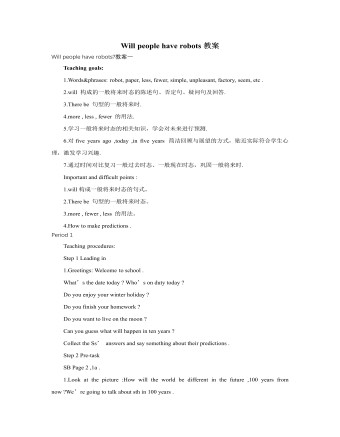
人教版新目标初中英语八年级下册Will people have robots教案
Teaching goals:1.Words&phrases: robot, paper, less, fewer, simple, unpleasant, factory, seem, etc .2.will 构成的一般将来时态的陈述句、否定句、疑问句及回答.3.There be 句型的一般将来时.4.more , less , fewer 的用法.5.学习一般将来时态的相关知识,学会对未来进行预测.6.对five years ago ,today ,in five years 简洁回顾与展望的方式,贴近实际符合学生心理,激发学习兴趣.7.通过时间对比复习一般过去时态、一般现在时态,巩固一般将来时.Important and difficult points :1.will构成一般将来时态的句式。2.There be 句型的一般将来时态。3.more , fewer , less 的用法。4.How to make predictions .Period 1Teaching procedures:Step 1 Leading in1.Greetings: Welcome to school .What’s the date today ? Who’s on duty today ?Do you enjoy your winter holiday ?Do you finish your homework ?Do you want to live on the moon ?Can you guess what will happen in ten years ?Collect the Ss’ answers and say something about their predictions .Step 2 Pre-taskSB Page 2 ,1a .1.Look at the picture :How will the world be different in the future ,100 years from now ?We’re going to talk about sth in 100 years .
- 查看更多相关Word文档
Would you mind turning down the music教案
Language goals:
In this unit students learn to make requests andto apologize…
New languages:
Would you mind cleaning your room?
Would you mind not playing baseball here?

Could you please take out the trash?
You have to do your homework.
I’m sorry. I’ll do it right away.
Sorry. We’ll go and play in the park.
No, not at all.
Sure. That’s no problem.
Difficult points:
1. How to make requests with “Would youmind…?”structure.
2. How to give responses to the requests “Wouldyou mind…?”
& “Could you…?”
3. How to deal with the difficulties in orderingthings.
4. Make requests about the given situations.
5. Help students to find the topic sentence ineach paragraph.
Teaching aids:
A tape recorder/ Some pictures
Teaching periods:
Period 1: Section A 1a, 1b, 1c
Period 2: Section A 2a, 2b, 2c
Period 3: Section A 3a, 3b, 4
Period 4: Section B 1a, 1b, 1c, 2a, 2b, 2c
Period 5: Section B 3a, 3b, 4, Self check
Period 6: Extensive reading
Period 1
Teaching aims:
1. Teach vocabulary words and the usefulexpressions.
2. Target languages:
Would you mind turning down the music?
No, not at all.
Would you mind moving your bike?
Sorry. I’ll do it right away.
3. Enable the students to make requests.
4. Help the student learn how to make requests.
Teaching procedures:
Step 1. Warming up
Write the following requests on the Bb:
Can you give me the book?
Please give me the book.
Would you mind giving me your book?
Say, the last example is a very polite way ofmaking a request.
Write down the title of this unit on theblackboard.
Ask students to make sentences using “Would youmind …?”structure.
Explain to the students that the –ing form shouldbe used after the verb mind.
Step 2. Presentation (1a)
1. Point to the four requests in the box. Askstudents to read them together.
2. Point to the picture. Ask the students to matchthe requests with the people in
the picture.
3. Check the answers with the whole class.
Step 3. Listening (1b)
1. Ask students to listen to the tape and understandthe target language of making requests.
2. Play the tape again and ask them to number therequests in the order they hear.
3. Check the answers with the whole class.
Step 4. Pair work (1c)
1. Ask students to read the dialogue in activity1c.
2. Ask students to make requests with theirpartners.
3. Ask some pairs to say their conversations tothe class.
Step 5. Homework
Try to get as many ways of asking for requests aspossible.
Period 2
Teaching aims:
1. Learn the vocabulary words and useful expressions.
2. Target languages:
Would you mind doing the dishes / cleaning yourroom / not wearing those old jeans / getting out of the bathroom / getting up?
Sorry. It won’t be long.
OK. I’ll do them in a minute.
I’m sorry. I’ll do it right away.
3. Enable the students to make responses torequests.
4. Help the student learn how to response torequests.
Teaching procedures:
Step 1. Revision
Ask students to make more sentences with the“Would you
mind…?”structure.
Step 2. Listening (2a, 2b)
1. Ask students to listen to the tape andunderstand the target language of
making requests in activity 1a.
2. Play the recording a second time. Ask Ss tonumber the pictures in the order they hear.
3. Check the answers with the whole class.
4. Point out the five responses in activity 2b.Ask students to read them.
5. Play the recording. This time ask Ss to fill inthe letters of the pictures
in front of the responses.
6. Check the answers.
Step 3. Pair work (2c)
Askstudents to do some oral practice about making requests and giving responseslike this about the information above.
Step 4. Grammar
Ask the students to read the sentences in thegrammar box.
Help the students sum up how to make requests andresponses.
Step 5. Homework
1. Kate is still sleeping in bed. Her mother hasto go to work. She wants Kate to do the dishes, clean the room, buy some foodand do the cooking. Help her mother to write a note about it.
2. Translate the following into English.
a) 你介意把门关上吗?好的,我马上就办。
b) 你介意把收音机关小点儿声吗?不,一点也不。
c) 请不要在教室里大声说话好吗?对不起。
Period 3
Teaching aims:
1. Teach vocabulary words and the usefulexpressions.
2. Target languages:
Your father is at a meeting and I’m goingshopping.
I need your help.
If you finish these tasks, we can go to a movietonight.
You have to help me in the kitchen.
Yes, and you have to help me make dinner.
When I finish, could you help me with my homework.
3. Enable the students to use “Would you mind…?”“Could you…?” to ask for requests.
4. Help the students learn how to ask for requestswith the target language.
Teaching procedures:
Step 1. Revision
Review the structure of making requests and givingresponses by asking students some questions.
Step 2. Compliment (3a)
1. Point to the pictures. Read the instructions.Ask students to talk about what
the boy is doing in each picture.
2. Point to the note. Ask Ss to read the note andfill in answers according to the
pictures.
3. Check the answers by asking some students toread out their work.
Step 3. Pair work (3b)
1. Ask two students to read the sample dialogue in3b.
2. Ask students to read the orders in the box onthe left.
3. Ask students to make dialogues with “wouldyou”, “could you” and “have to” according to the orders.
4. Ask several pairs to say one of their conversationsto the class.
Step 4. Group work (4)
1. Ask students to read the instructions inactivity 4.
2. Ask students to finish the chart.
3. Have students make conversations according tothe chart.
4. Ask a few students to share the sampleconversation.
Step 5. Homework
Make more conversations using “would you”, “couldyou” and “have to”.
Period 4
Teaching aims:
1. Teach vocabulary words and the usefulexpressions.
2. Target languages:
Your barber gave you a terrible haircut.
The pen you bought didn’t work.
The store clerk gave you the wrong size.
The waitress brought you the wrong food.
3. Enable the students to make complaints and makerequests.
4. Help the students learn how to make complaintsand make requests.
Teaching procedures:
Step 1. Lead-in
Greet the students.
Check the homework.
Teach the students the new words in this period.
Step 2. Reading and writing (1a, 1b)
Ask students to do activity 1a.
1. Read the instruction and ask Ss to read eachsituation and think about the two
questions.
2. Ask some students to share their answers withthe class. Ask other students
whether they agree with the opinions or not.
3. Ask students to read the pictures and talkabout them. Help them understand
the pictures clearly.
Ask students to do activity 1b.
1. Ask students to talk about what they havecomplained about.
2. Have students write all the ideas down in theirexercise books.
3. Collect all the complaints from the studentsand write them on the blackboard.
4. Rank the items from the most to the leastannoying.
Step 3. Listening (2a, 2b)
Let students do activity 2a.
1. Ask students to listen to the tape. Answer anyquestions they have about the
recording.
2. Play the tape again and students number thesentences in the order they hear
them.
3. Correct the answers with the whole class.
Let students do activity 2b.
1. Ask students to read the three column headings.
2. Have students discuss what each heading means.
3. Play the tape. Students listen and write theplaces, problems and solutions in the chart.
4. Play the tape again. Stop for answers ifnecessary.
5. Check the answers with the whole class.
Step 4. Pair work (2c)
1. Ask two students to role play the dialogues in2c.
2. Ask students to look at the problems in 2b.Make students work with their partner and role play similar requests about theproblems.
3. Ask several pairs of students to say theirconversations to the class.
Step 5. Homework
Talk about some of the annoying things. Makedialogues about one of them.
Period 5
Teaching aims:
1. Teach vocabulary words and the usefulexpressions.
2. Target languages:
I don’tlike waiting in line when a shop assistant has a long telephone conversation.
Could youplease not follow me around?
I’ll askyou if I need some help.
I getannoyed when someone stands in the subway door.
Would youmind helping me?
3. Enable the students to make requests when theyget annoyed.
4. Help the students learn how to make requestswhen they get annoyed.
Teaching procedures:
Step 1. Revision and lead-in
Ask students to turn to page 55 and look at 2b.Ask them some questions. For example: What will you say to the clerk if he orshe gets you a wrong
size shirt?
Step 2. Reading (3a)
1. Play the recording of the article and have themrepeat.
2. Ask students to write the words down that theydon’t understand.
3. Ask students to underline the things that areannoying.
4. Have the students circle what people do whensomething annoying
happen.
5. Correct the answers with the class.
转载请注明出处!本文地址:
https://www.lfppt.com/worddetails_31193156.html最新课件教案文档
-

精选高中生期末评语
1、该生学习态度端正 ,能够积极配合老师 ,善于调动课堂气氛。 能够积极完成老师布置的任务。学习劲头足,听课又专注 ,做事更认 真 ,你是同学们学习的榜样。但是,成绩只代表昨天,并不能说明你 明天就一定也很优秀。所以,每个人都应该把成绩当作自己腾飞的起 点。2、 你不爱说话 ,但勤奋好学,诚实可爱;你做事踏实、认真、为 人忠厚 ,是一个品行端正、有上进心、有良好的道德修养的好学生。在学习上,积极、主动,能按时完成老师布置的作业,经过努力 ,各 科成绩都有明显进步,你有较强的思维能力和学习领悟力,学习也有 计划性,但在老师看来,你的潜力还没有完全发挥出来,学习上还要有持久的恒心和顽强的毅力。

公司2024第一季度意识形态工作联席会议总结
一是要把好正确导向。严格落实主体责任,逐条逐项细化任务,层层传导压力。要抓实思想引领,把理论学习贯穿始终,全身心投入主题教育当中;把理论学习、调查研究、推动发展、检视整改等有机融合、一体推进;坚持学思用贯通、知信行统一,努力在以学铸魂、以学增智、以学正风、以学促干方面取得实实在在的成效。更加深刻领会到******主义思想的科学体系、核心要义、实践要求,进一步坚定了理想信念,锤炼了政治品格,增强了工作本领,要自觉运用的创新理论研究新情况、解决新问题,为西北矿业高质量发展作出贡献。二是要加强应急处事能力。认真组织开展好各类理论宣讲和文化活动,发挥好基层ys*t阵地作用,加强分析预警和应对处置能力,提高发现力、研判力、处置力,起到稳定和引导作用。要坚决唱响主旋律,为“打造陕甘片区高质量发展标杆矿井”、建设“七个一流”能源集团和“精优智特”新淄矿营造良好的舆论氛围。三是加强舆情的搜集及应对。加强职工群众热点问题的舆论引导,做好舆情的收集、分析和研判,把握时、度、效,重视网上和网下舆情应对。
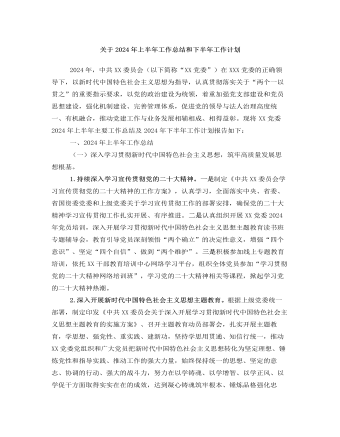
关于2024年上半年工作总结和下半年工作计划
二是深耕意识形态。加强意识形态、网络舆论阵地建设和管理,把握重大时间节点,科学分析研判意识形态领域情况,旗帜鲜明反对和抵制各种错误观点,有效防范处置风险隐患。积极响应和高效落实上级党委的决策部署,确保执行不偏向、不变通、不走样。(二)全面深化党的组织建设,锻造坚强有力的基层党组织。一是提高基层党组织建设力量。压实党建责任,从政治高度检视分析党建工作短板弱项,有针对性提出改进工作的思路和办法。持续优化党建考核评价体系。二是纵深推进基层党建,打造坚强战斗堡垒。创新实施党建工作模式,继续打造党建品牌,抓实“五强五化”党组织创建,广泛开展党员教育学习活动,以实际行动推动党建工作和经营发展目标同向、部署同步、工作同力。三是加强高素质专业化党员队伍管理。配齐配强支部党务工作者,把党务工作岗位作为培养锻炼干部的重要平台。
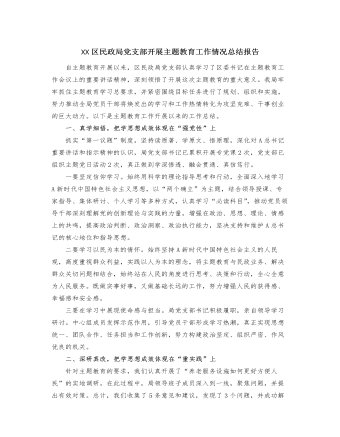
XX区民政局党支部开展主题教育工作情况总结报告
二要专注于解决问题。根据市委促进经济转型的总要求,聚焦“四个经济”和“双中心”的建设,深入了解基层科技工作、学术交流、组织建设等方面的实际情况,全面了解群众的真实需求,解决相关问题,并针对科技工作中存在的问题,采取实际措施,推动问题的实际解决。三要专注于急难愁盼问题。优化“民声热线”,推动解决一系列基层民生问题,努力将“民声热线”打造成主题教育的关键工具和展示平台。目前,“民声热线”已回应了群众的8个政策问题,并成功解决其中7个问题,真正使人民群众感受到了实质性的变化和效果。接下来,我局将继续深入学习主题教育的精神,借鉴其他单位的优秀经验和方法,以更高的要求、更严格的纪律、更实际的措施和更好的成果,不断深化主题教育的实施,展现新的风貌和活力。
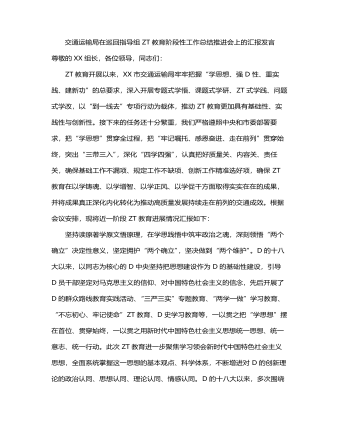
交通运输局在巡回指导组主题教育阶段性工作总结推进会上的汇报发言
今年3月,市政府出台《关于加快打造更具特色的“水运XX”的意见》,提出到2025年,“苏南运河全线达到准二级,实现2000吨级舶全天候畅行”。作为“水运XX”建设首战,谏壁闸一线闸扩容工程开工在即,但项目开工前还有许多实际问题亟需解决。结合“到一线去”专项行动,我们深入到谏壁闸一线,详细了解工程前期进展,实地察看谏壁闸周边环境和舶通航情况,不断完善施工设计方案。牢牢把握高质量发展这个首要任务,在学思践悟中开创建功之业,坚定扛起“走在前、挑大梁、多做贡献”的交通责任,奋力推动交通运输高质量发展持续走在前列。以学促干建新功,关键在推动高质量发展持续走在前列。新时代中国特色社会主义思想着重强调立足新发展阶段、贯彻新发展理念、构建新发展格局,推动高质量发展,提出了新发展阶段我国经济高质量发展要坚持的主线、重大战略目标、工作总基调和方法论等,深刻体现了这一思想的重要实践价值。
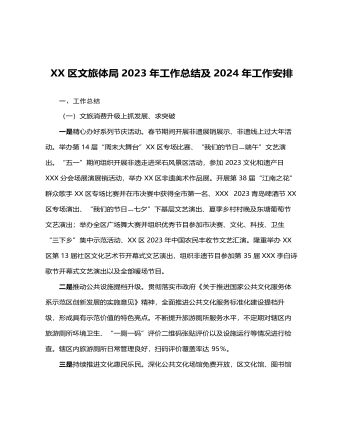
XX区文旅体局2023年工作总结 及2024年工作安排
三、2024年工作计划一是完善基层公共文化服务管理标准化模式,持续在公共文化服务精准化上探索创新,围绕群众需求,不断调整公共文化服务内容和形式,提升群众满意度。推进乡镇(街道)“114861”工程和农村文化“121616”工程,加大已开展活动的上传力度,确保年度目标任务按时保质保量完成。服务“双减”政策,持续做好校外培训机构审批工作,结合我区工作实际和文旅资源优势,进一步丰富我市义务教育阶段学生“双减”后的课外文化生活,推动“双减”政策走深走实。二是结合文旅产业融合发展示范区,全力推进全域旅游示范区创建,严格按照《国家全域旅游示范区验收标准》要求,极推动旅游产品全域布局、旅游要素全域配置、旅游设施全域优化、旅游产业全域覆盖。
今日更新Word
-

精选高中生期末评语
1、该生学习态度端正 ,能够积极配合老师 ,善于调动课堂气氛。 能够积极完成老师布置的任务。学习劲头足,听课又专注 ,做事更认 真 ,你是同学们学习的榜样。但是,成绩只代表昨天,并不能说明你 明天就一定也很优秀。所以,每个人都应该把成绩当作自己腾飞的起 点。2、 你不爱说话 ,但勤奋好学,诚实可爱;你做事踏实、认真、为 人忠厚 ,是一个品行端正、有上进心、有良好的道德修养的好学生。在学习上,积极、主动,能按时完成老师布置的作业,经过努力 ,各 科成绩都有明显进步,你有较强的思维能力和学习领悟力,学习也有 计划性,但在老师看来,你的潜力还没有完全发挥出来,学习上还要有持久的恒心和顽强的毅力。
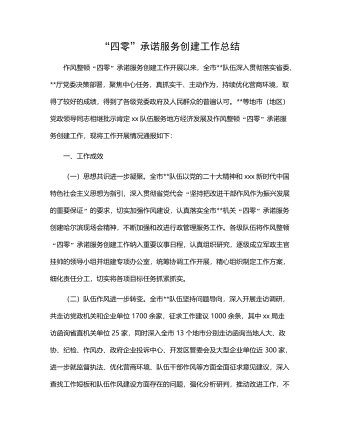
“四零”承诺服务创建工作总结
(二)坚持问题导向,持续改进工作。要继续在提高工作效率和服务质量上下功夫,积极学习借鉴其他部门及xx关于“四零”承诺服务创建工作的先进经验,同时主动查找并着力解决困扰企业和群众办事创业的难点问题。要进一步探索创新,继续优化工作流程,精简审批程序,缩短办事路径,压缩办理时限,深化政务公开,努力为企业当好“保姆”,为群众提供便利,不断适应新时代人民群众对政务服务的新需求。(三)深化内外宣传,树立良好形象。要深入挖掘并及时总结作风整顿“四零”承诺服务创建工作中形成的典型经验做法,进一步强化内部宣传与工作交流,推动全市创建工作质效整体提升。要面向社会和公众庄严承诺并积极践诺,主动接受监督,同时要依托电台、电视台、报纸及微信、微博等各类媒体大力宣传xx队伍作风整顿“四零”承诺服务创建工作成果,不断扩大社会知情面和群众知晓率。

2024年度工作计划汇编(18篇)
1.市政基础设施项目5项,总建设里程2.13km,投资概算2.28亿元。其中,烔炀大道(涉铁)工程施工单位已进场,项目部基本建成,正在办理临时用地、用电及用水等相关工作;中铁佰和佰乐(巢湖)二期10KV外线工程已签订施工合同;黄麓镇健康路、纬四路新建工程均已完成清单初稿编制,亟需黄麓镇完成图审工作和健康路新建工程的前期证件办理;公安学院配套道路项目在黄麓镇完成围墙建设后即可进场施工。2.公益性建设项目6项,总建筑面积15.62万㎡,投资概算10.41亿元。其中,居巢区职业教育中心新建工程、巢湖市世纪新都小学扩建工程已完成施工、监理招标挂网,2月上旬完成全部招标工作;合肥职业技术学院大维修三期已完成招标工作,近期签订施工合同后组织进场施工;半汤疗养院净化和医用气体工程已完成招标工作;半汤疗养院智能化工程因投诉暂时中止;巢湖市中医院(中西医结合医院)新建工程正在按照既定计划推进,预计4月中下旬挂网招标。

驻村工作队2024年第一季度工作总结汇编(4篇)
三是做大做强海产品自主品牌。工作队于xx年指导成立的冬松村海产品合作社,通过与消费帮扶平台合作,在工作队各派出单位、社会团体、个人支持下,已获得逾xx万元销售额。2022年底工作队推动合作社海产品加工点扩建的工作方案已获批,待资金下拨后将正式启动扩建工作。四是积极助企纾困,带动群众增收致富。工作队利用去年建立的xx镇产业发展工作群,收集本地企业在产品销售、技术、人力、资金、运营、用地等方面的需求,并加大xx支持乡村振兴力度,xx助理赴各村委开展多场xx政策支持乡村振兴宣讲活动,本季度有x万元助农贷款获批,xx万贷款正在审批中。在壮大既有产业的同时,完善联农带农机制,一方面鼓励企业雇用本地农户就业,另一方面计划与本地农户签订长期收购合同,让农民种得放心、种得安心,带动当地群众共同致富。

主题教育总结常用提纲大全
第一,主题教育是一次思想作风的深刻洗礼,初心传统进一步得到回归。第二,主题教育是一次沉疴积弊的集中清扫,突出问题进一步得到整治。第三,主题教育是一次强化为民服务的生动实践,赤子之情进一步得到提振。第四,主题教育是一次激发创业担当的有利契机,发展层次进一步得到提升。2.第一,必须提领思想、武装思想。第二,必须聚焦问题、由表及里。第三,必须领导带头、以上率下。第四,必须务实求实、认真较真。3.一是抬高政治站位,坚持大事大抓。二是坚持思想领先,狠抓学习教育。三是突出问题导向,深入整改纠治。四是坚持领导带头,发挥表率作用。4.一是立足“早”字抓筹划。二是着眼“活”字抓学习。三是围绕“统”字抓协调。5.一是形势所需。二是任务所系。三是职责所在。四是制度所定。6.一要提升认识。二要积极作为。三要密切协作。
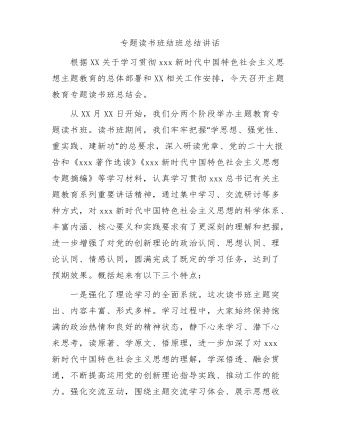
主题教育专题读书班结班总结讲话
第二,要把调查研究贯穿始终,实干担当促进发展。开展好“察实情、出实招”“破难题、促发展”“办实事、解民忧”专项行动,以强化理论学习指导发展实践,以深化调查研究推动解决发展难题。领导班子成员要每人牵头XX个课题开展调查研究,XX月底前召开调研成果交流会,集思广益研究对策措施。各部门、各单位要制定调研计划,通过座谈访谈、问卷调查、统计分析等方式开展调查研究,解决工作实际问题,帮助基层单位和客户解决实际困难。第三,要把检视问题贯穿始终,廉洁奉公树立新风。认真落实公司主题教育整改整治工作方案要求,坚持边学习、边对照、边检视、边整改,对标对表xxx新时代中国特色社会主义思想,深入查摆不足,系统梳理调查研究发现的问题、推动发展遇到的问题、群众反映强烈的问题,结合巡视巡察、审计和内外部监督检查发现的问题,形成问题清单。










